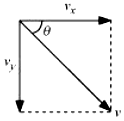Question 5.11:
A truck starts from rest and accelerates uniformly at 2.0 m s -2. At t = 10 s, a stone is dropped by a person standing on the top of the truck (6 m high from the ground). What are
(a) velocity, and
(b) acceleration of the stone at t = 11 s? (Neglect air resistance.)


© 2025 GoodEd Technologies Pvt. Ltd.